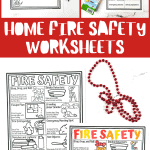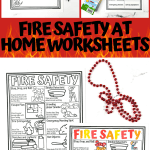Free Home Fire Safety Worksheet For Kids
The home fire safety worksheet is an important resource for teaching fire safety education, particularly for young children.
This fun and educational tool is designed to make learning about fire home safety both engaging and easy to understand.
Packed with fire safety tips, these free printable fire safety worksheets ensure kids absorb crucial knowledge while having fun.
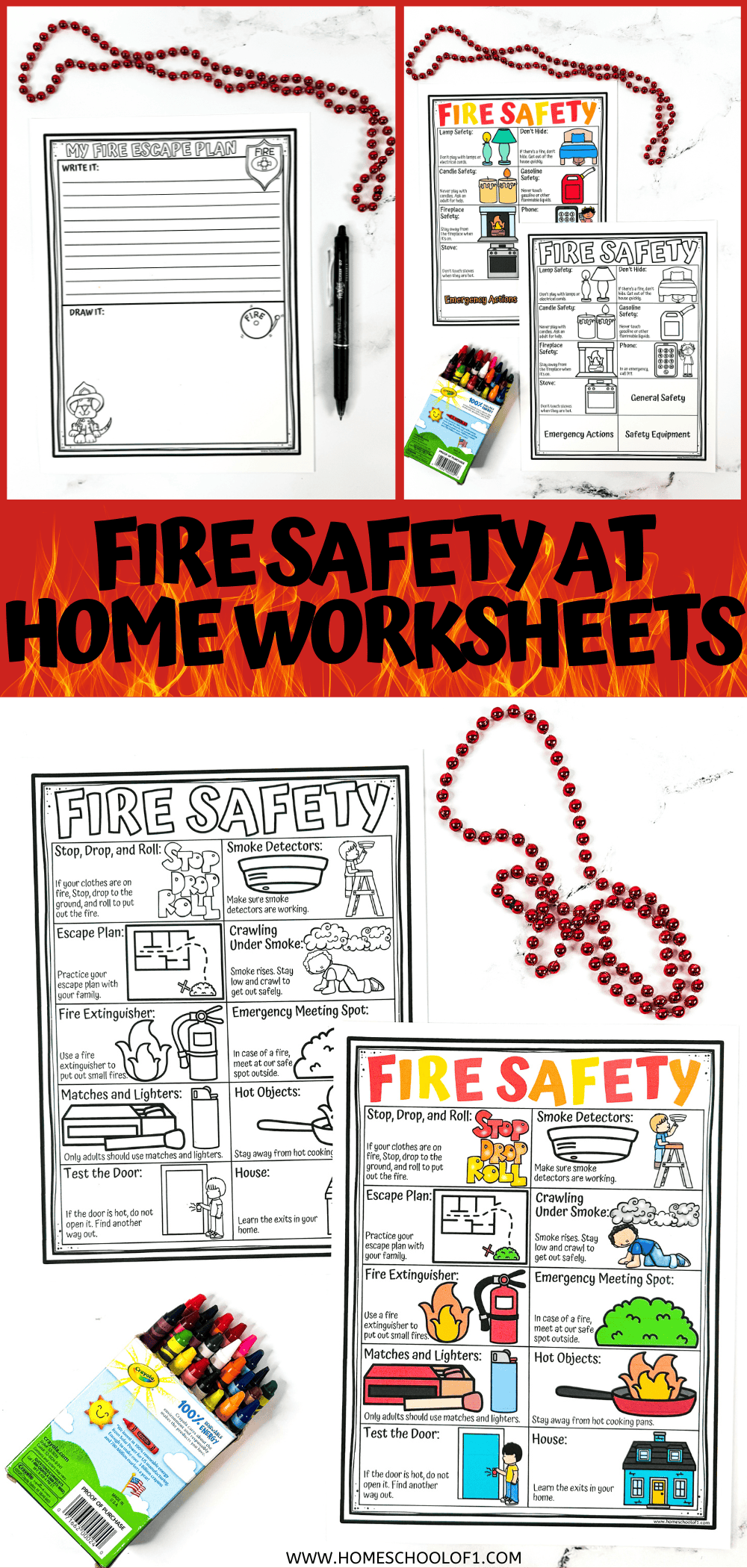
**This post may contain affiliate links. As an Amazon Associate and a participant in other affiliate programs, I earn a commission on qualifying purchases.**
Fire Safety At Home Worksheet
There are 5 pages included in this free printable.
Start by coloring in the black and white images to make the activity more engaging.
Carefully cut out all 20 images.
Organize the images into the three sections: General Safety, Emergency Actions, and Safety Equipment.
Arrange the sorted images on a poster or in a scrapbook to serve as a visual reminder of fire safety practices.
This interactive approach helps reinforce the lessons, making the information more memorable and practical for children.
National Fire Protection Association statistics show that smoke alarms can significantly reduce the risk of death in a house fire.
General Safety
- Only adults should use matches and lighters.
- Stay away from hot cooking pans and stoves. We keep a fire blanket next to our stove too.
- Don’t play with lamps or electrical cords.
- Never touch gasoline or other flammable liquids.
- Stay away from the fireplace when it’s on.
- Never play with candles; ask an adult for help.
- If there’s a fire, don’t hide. Get out of the house quickly.
Emergency Actions
One of the most fundamental lessons in fire safety is the “Stop, Drop, and Roll” technique. This method is taught to ensure that children know how to extinguish flames if their clothing catches fire.
The instruction is simple: stop immediately, drop to the ground, and roll to smother the flames. This crucial skill can save lives and prevent severe burns.
Since smoke rises, the air near the ground is clearer and safer to breathe. By teaching children to crawl, the material helps them understand how to navigate a smoke-filled environment and increases their chances of a safe escape.
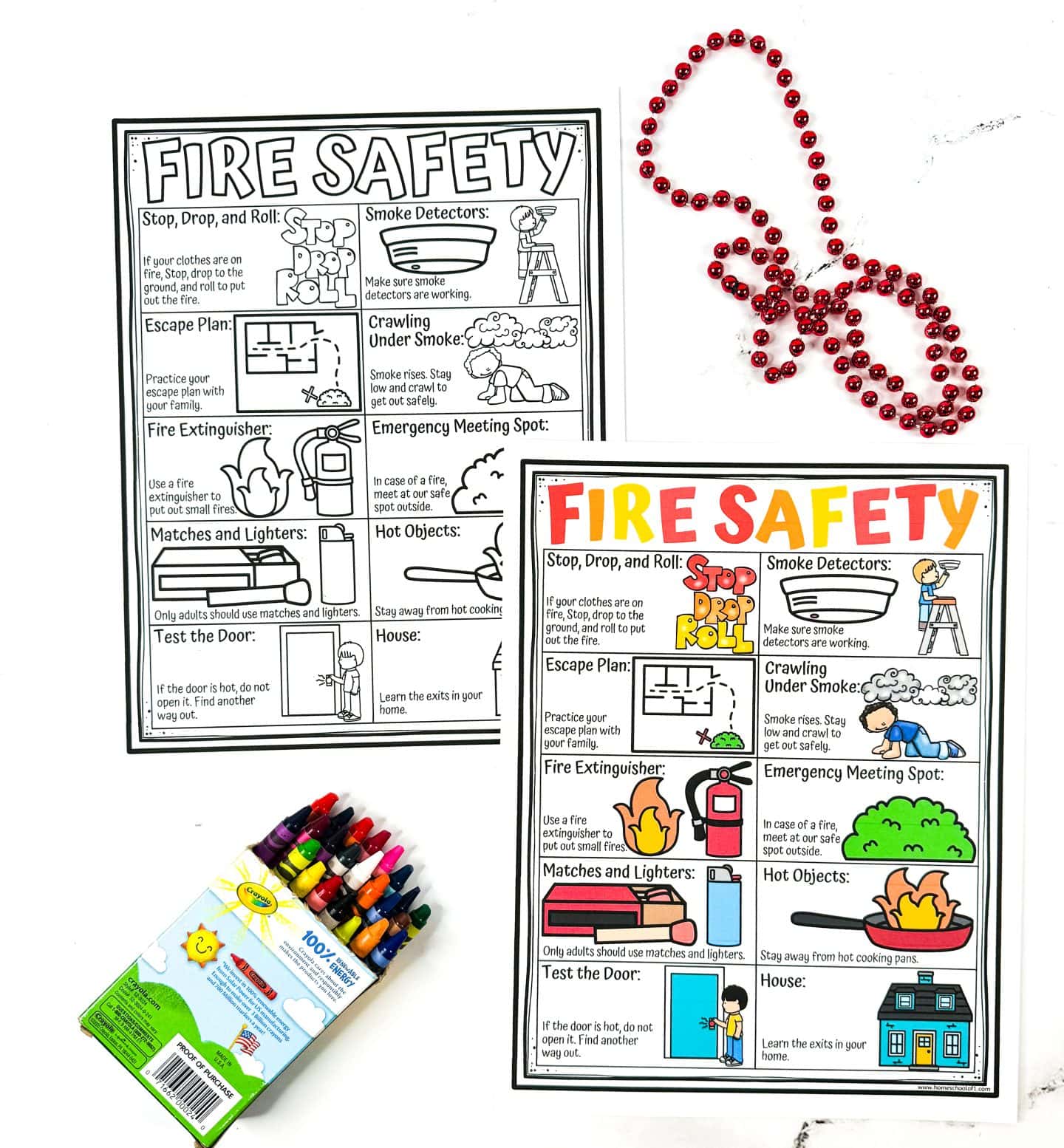
Instructing children to test doors for heat before opening them during a fire is another critical safety tip. If a door is hot, it indicates that there may be fire on the other side, and they should find an alternate escape route.
This knowledge helps prevent children from inadvertently entering more dangerous areas.
Practicing an escape plan encourages families to create and regularly practice a fire escape plan, ensuring that everyone knows the safest routes and procedures to follow in case of a fire.
This preparation can significantly reduce panic and confusion during an actual emergency.
Establishing a safe evacuation spot outside the home is highlighted as an essential part of a family’s fire escape plan.
This ensures that once evacuated, everyone knows where to gather, making it easier to account for all family members and inform emergency responders if someone is missing.
In an emergency, call 911.
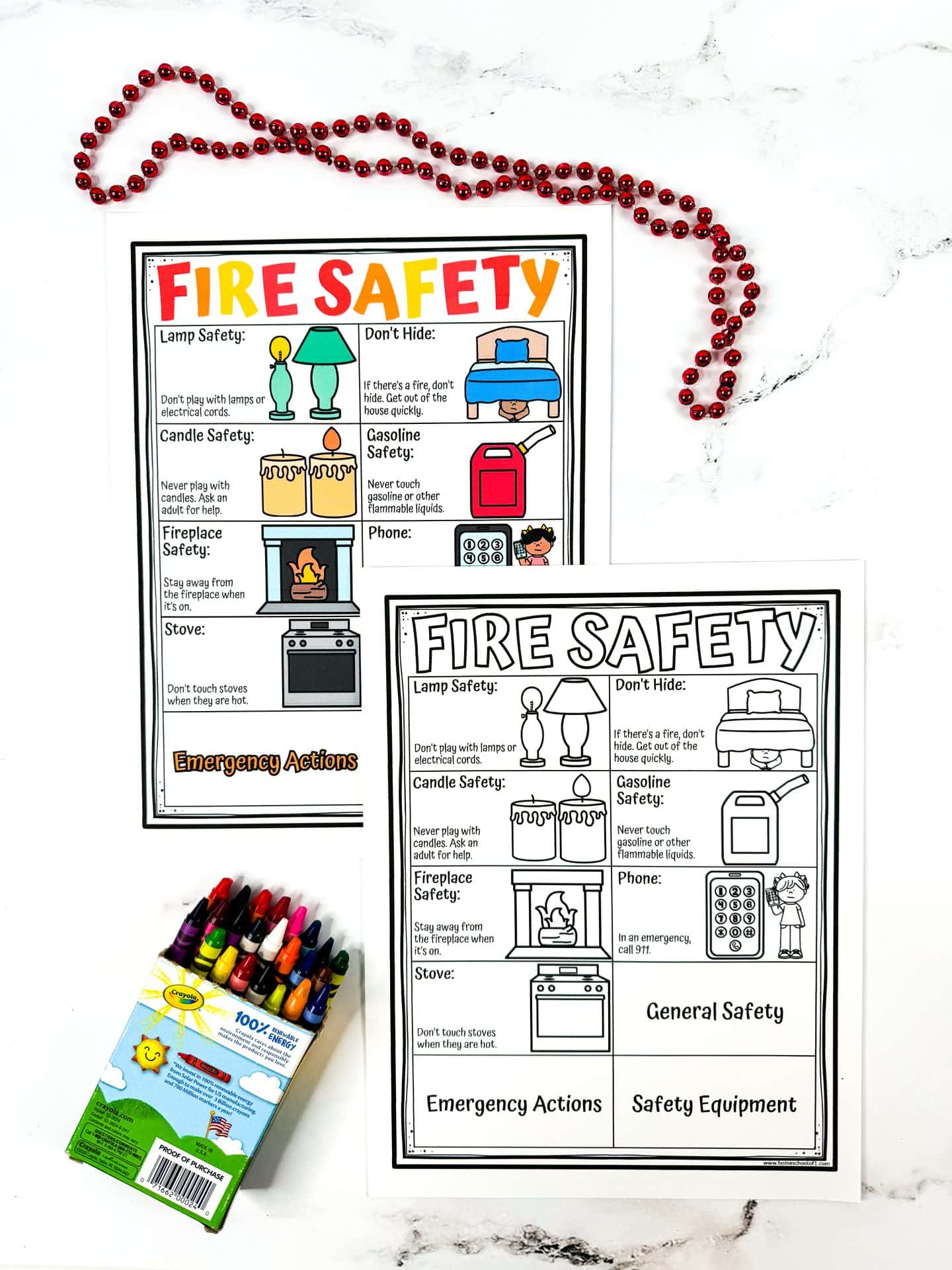
Safety Equipment
Smoke detectors are vital in providing early warnings of a fire. Make sure to check that smoke detectors are functional and regularly tested.
Use a fire extinguisher to put out small fires.
Identify all exits in your house as part of your safety plan.
Regular fire drills and maintaining fire safety equipment like fire extinguishers and escape ladders are crucial.
My Fire Escape Plan
The final page is dedicated to a highly interactive and personalized activity that encourages children to take an active role in their fire safety education.
This page guides children through the process of creating their own fire escape plan, a critical step in ensuring they are prepared and know exactly what to do in case of a fire emergency.
Writing the Escape Plan
Children are first asked to think about and write down their fire escape plan. This written plan should include:
- List all possible exits in their home, including doors and windows, that can be used to escape in case of a fire.
- For each room in the house, specify a primary exit route and a secondary route in case the primary route is blocked by fire or smoke.
- Choose a safe spot outside the home where all family members will meet after escaping. This spot should be a safe distance from the house but easily reachable.
- Include essential actions like checking doors for heat, staying low to avoid smoke, and not re-entering the house once escaped.
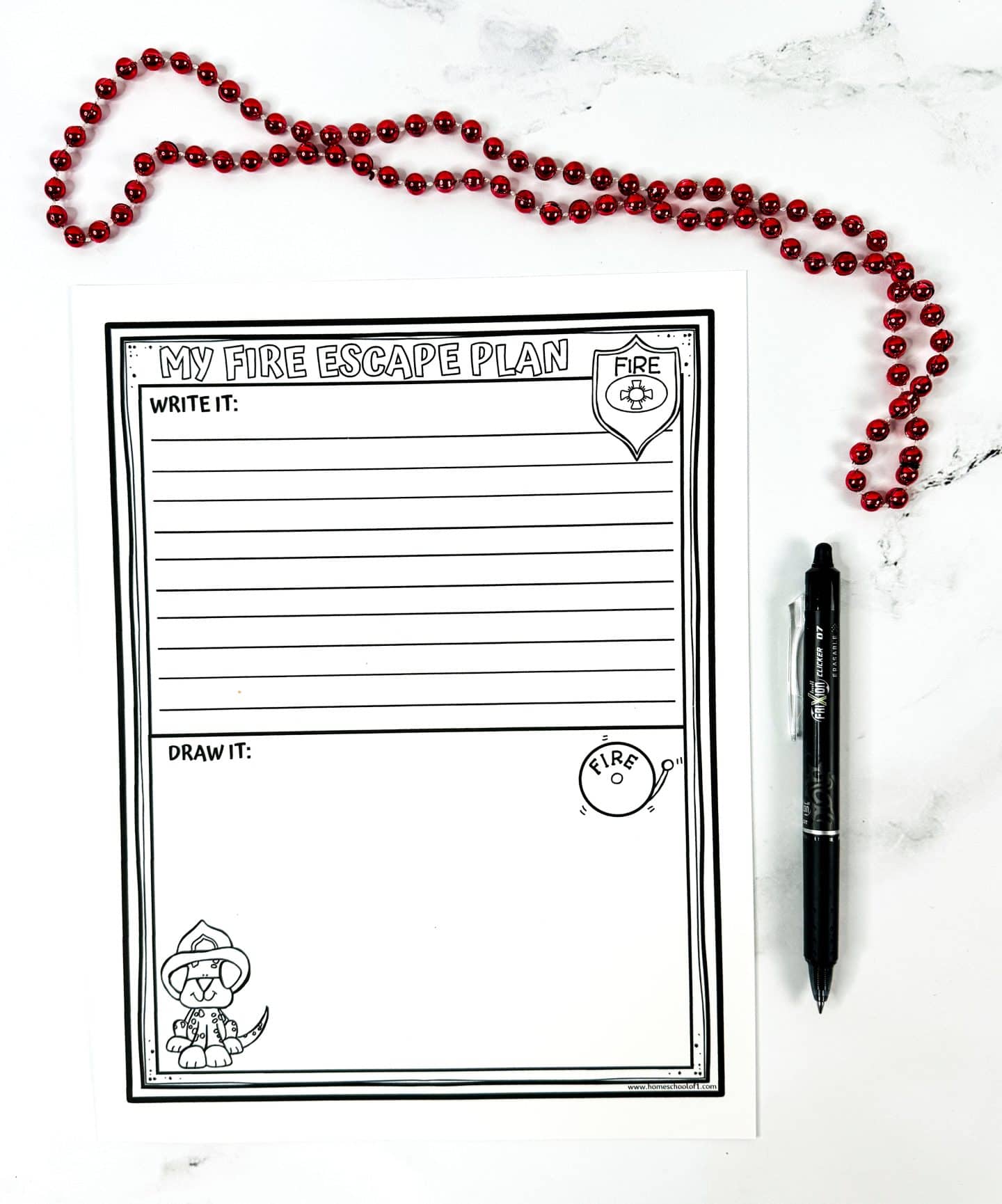
Drawing the Escape Plan
After writing down their escape plan, children are asked to draw a map of their home. This map should clearly show:
- Sketch the floor plan of their home, labeling all rooms.
- Mark all doors and windows that can be used as exits.
- Draw lines showing the primary and secondary escape routes from each room.
- Highlight the designated safe meeting spot outside the home.
This visual representation helps reinforce the written plan and ensures children have a clear and concrete understanding of how to escape their home safely in the event of a fire.
During Fire Prevention Week, families should check their safety checklist to ensure all fire safety measures are in place.
Educational benefits
The fire safety at home PDF offers several educational benefits that extend beyond basic fire safety knowledge. Creating a personal fire escape plan, in particular, provides a comprehensive and interactive way for children to learn and prepare for emergencies.
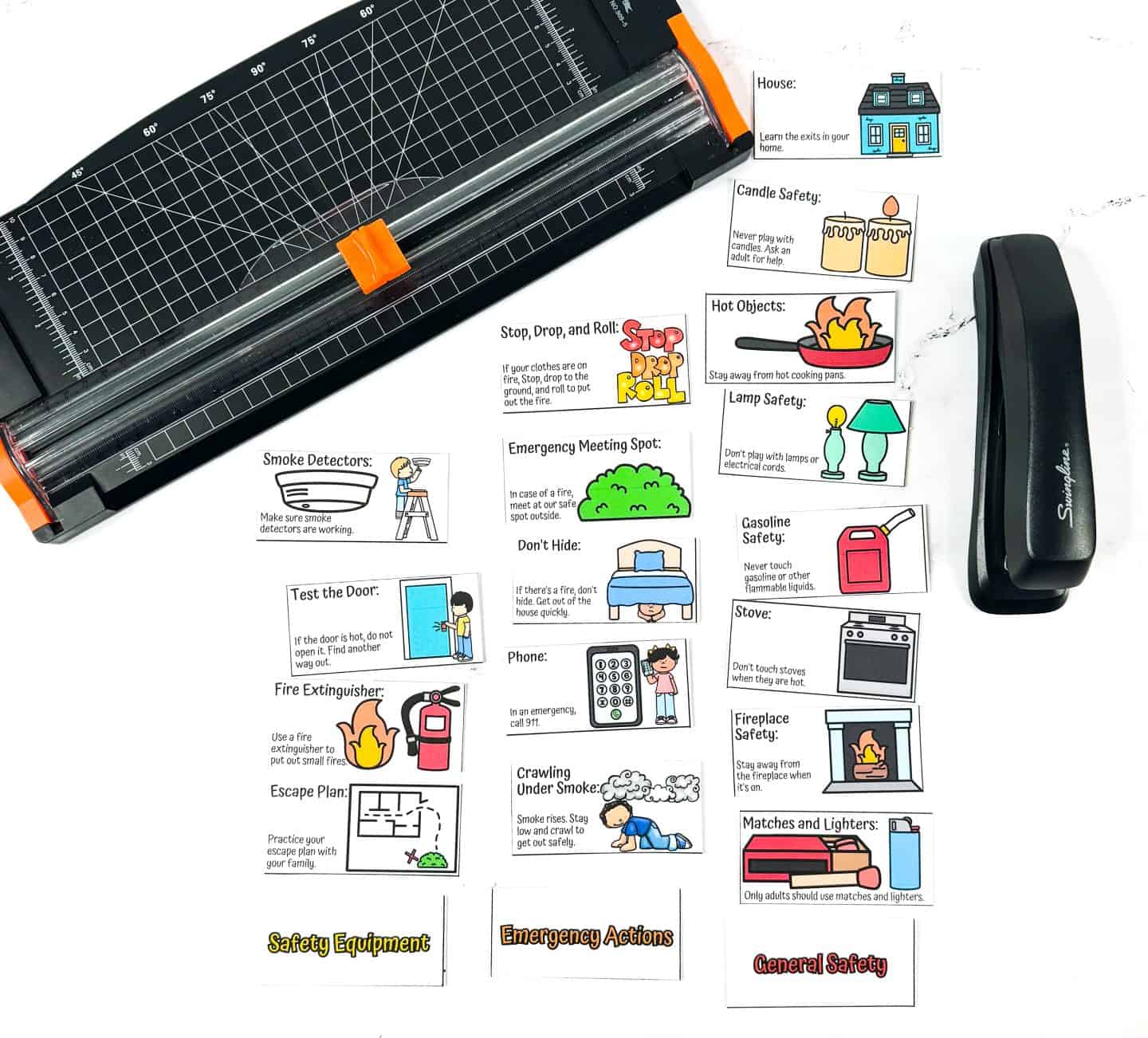
Writing and drawing their escape plan helps children better understand the layout of their home and the safest ways to exit in an emergency.
This activity reinforces the importance of knowing multiple escape routes and having a predetermined meeting spot.
Introducing these fire safety concepts to children at a young age fosters awareness and understanding of potential hazards. It equips children with practical skills that can be applied in emergencies, potentially saving lives.
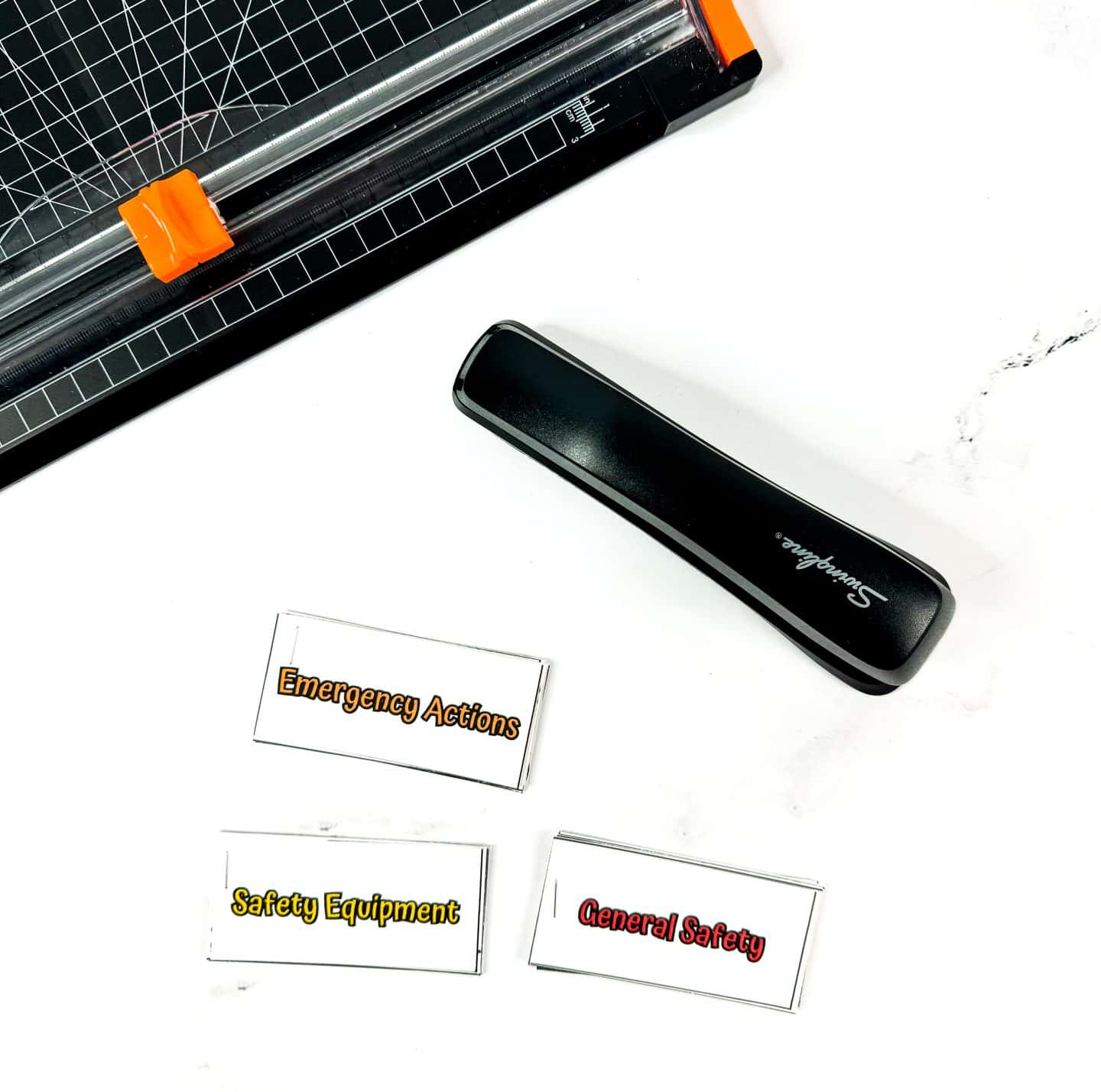
Encouraging children to discuss and practice the escape plan with their family fosters a collaborative approach to fire safety.
This involvement enhances overall household safety as everyone becomes familiar with the plan and understands their role during an emergency.
Family participation in creating and practicing escape plans ensures that everyone is prepared and can act quickly and efficiently during a fire.
It is also highly recommended that you install carbon monoxide detectors in your home.
Preparing a personal escape plan can reduce fear and anxiety, giving children the confidence to act quickly and safely during a fire.
Knowledge and preparation can reduce fear and build confidence, helping children react calmly and efficiently during a fire.
When children are well-prepared, they are more likely to stay composed and remember the steps they need to take to stay safe.
By integrating these educational benefits, the home fire safety worksheet not only teaches children essential fire safety knowledge but also empowers them to take proactive steps in ensuring their safety and the safety of their families.
Have fun with fire safety tracing worksheets too!
Books about home fire safety for kids
Looking for helpful and engaging books to teach kids about fire safety? These titles are perfect for home or classroom use.
No Dragons for Tea: Fire Safety for Kids (and Dragons) – A fun and informative story that introduces fire safety in a kid-friendly way—perfect for early learners.
Stop, Drop, and Roll! (Fire Safety) – This lively story follows a young girl as she learns fire safety rules in a memorable and reassuring way.
Stop Drop and Roll (A Book about Fire Safety) – Part of a nonfiction safety series for kids, this book offers simple, clear facts about fire safety.
Need to print later? Add this to your Pinterest board or share it on Facebook. You’ll have it handy whenever you’re ready to use it!
Print your fire safety awareness worksheets here!
Ready to grab your free printable? Just pop your name and email into the form below, and it’s all yours!
Last Updated on 7 April 2025 by Clare Brown

